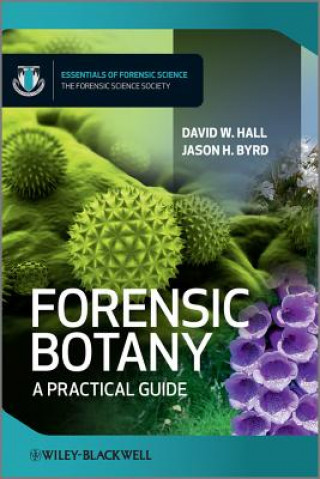
Code: 01294003
Forensic Botany - A Practical Guide
by David Hall
Forensic Botany: A Practical Guide is an accessible introduction to the way in which botanical evidence is identified, collected and analysed in criminal cases. Increasingly this form of evidence is becoming more important in fore ... more
- Language:
 English
English - Binding: Paperback
- Number of pages: 212
Publisher: John Wiley & Sons Inc, 2012
- More about this

You might also like
-

Jujutsu Kaisen, Vol. 10
42.63 zł -12 % -

Mastering Sculpture: The Figure in Clay
137.39 zł -11 % -

The In-Between: Unforgettable Encounters During Life's Final Moments
105.13 zł -12 % -

Savage Continent
70.45 zł -23 % -
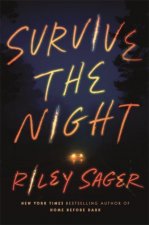
Survive the Night
44.65 zł -13 % -

Dracula
38.30 zł -14 % -

Hairy Pussy Beauties
243.94 zł -10 % -

Into the Wild
77.31 zł -11 % -
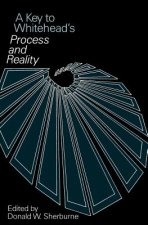
Key to Whitehead's Process and Reality
210.27 zł -
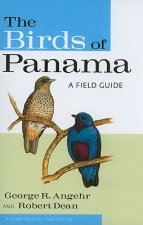
Birds of Panama
145.86 zł -5 % -
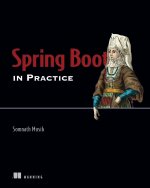
Spring Boot in Practice
314.41 zł -

Losing the Field
54.93 zł -10 % -

Strangers and Sojourners
93.64 zł -5 % -

Race Car Technology Full Course
636.69 zł -

Cats on Catnip: 20 Postcards
42.43 zł -13 % -

English for Electrical Engineering in Higher Education Studies - Course Book and 2 x Audio CDs
197.87 zł -

Genocide
172.17 zł -
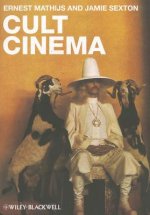
Cult Cinema - An Introduction
276.10 zł -

Anal Sex Basics
107.35 zł -10 % -

Books Condemned to Be Burnt
132.42 zł -

Understanding and Healing Emotional Trauma
217.33 zł
Give this book as a present today
- Order book and choose Gift Order.
- We will send you book gift voucher at once. You can give it out to anyone.
- Book will be send to donee, nothing more to care about.
More about Forensic Botany - A Practical Guide
You get 229 loyalty points
 Book synopsis
Book synopsis
Forensic Botany: A Practical Guide is an accessible introduction to the way in which botanical evidence is identified, collected and analysed in criminal cases. Increasingly this form of evidence is becoming more important in forensic investigation and yet there are few trained botanists able to assist in such cases. This book is intended to show how useful simple collection methods and standard plant analysis can be in the course of such investigations and is written in a clear and accessible manner to enhance understanding of the subject for the non-specialist.§Clearly structured throughout, this book combines well known collection techniques in a field oriented format that can be used for casework. Collection of evidence differs from formal plant collection in that most professional plant collectors are gathering entire plants or significant portions of a plant for permanent storage and reference. Evidence frequently consists of fragments, sometimes exceedingly tiny. Exemplars (examples of reference plants) are collections of plants made in the manner a botanist would collect them. These collections are necessary to link or exclude evidence to or from a scene. Various methods that allow easy collection, transportation, and preservation of evidence are detailed throughout the book.§This book is written for those who have no formal background working with plants. It can be used as a practical guide for students taking forensic science courses, law enforcement training, legal courses, and as a template for plant collection at any scene where plants occur and where rules or laws are involved. Veterinarians, various environmental agencies, anthropologists, and archeologists are examples of disciplines that are more recently in need of plant evidence. Veterinarians are becoming more active in pursuing cases of animals that have been abused or are victims of illegal killing. Anthropologists and archeologists are often called to help with body recovery in outdoor environments. Environmental agencies are increasingly forced to adopt rules for resource protection, are in need of a guide for procedures for plant evidence collection and application.§The format of the book is designed to present the reader with all the information needed to conduct a botanical analysis of a crime scene; to highlight the forensic significance of the botanical evidence that may be present; how to collect that evidence in the correct manner and preserve and store that evidence appropriately- also shows how to conduct a laboratory analysis of the plants.
 Book details
Book details
Book category Books in English Society & social sciences Social services & welfare, criminology Crime & criminology
393.74 zł
- Full title: Forensic Botany - A Practical Guide
- Author: David Hall
- Language:
 English
English - Binding: Paperback
- Number of pages: 212
- EAN: 9780470661239
- ISBN: 0470661232
- ID: 01294003
- Publisher: John Wiley & Sons Inc
- Weight: 394 g
- Dimensions: 243 × 170 × 10 mm
- Date of publishing: 01. June 2012
Trending among others
-
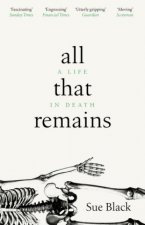
All That Remains
52.01 zł -23 % -
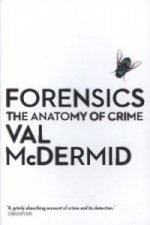
Forensics
52.01 zł -23 % -

Dictionary of Forensic Science
78.32 zł -10 % -
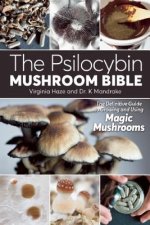
Psilocybin Mushroom Bible
123.98 zł -6 % -

Inside the Criminal Mind (Newly Revised Edition)
75.60 zł -13 % -
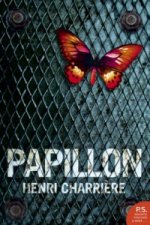
Papillon
39.20 zł -28 % -

The Anatomy of Motive
46.36 zł -12 % -

Yakuza
133.46 zł -12 % -

American Kingpin
70.25 zł -14 % -

Donnie Brasco
61.28 zł -23 % -

Deranged
76.80 zł -1 % -

Circle of Treason
105.64 zł -4 % -

Stable Isotope Forensics - Methods and Forensic Applications of Stable Isotope Analysis 2e
793.34 zł -
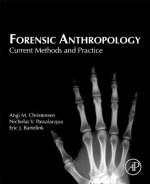
Forensic Anthropology
500.42 zł -

Narconomics
70.25 zł -14 % -

Orange Is the New Black
43.44 zł -15 % -

Peaky Blinders: the Real Story
42.93 zł -23 % -

Narcoland
57.75 zł -14 % -

Cosa Nostra: A History of the Sicilian Mafia
61.28 zł -23 % -

Yakuza Moon: Memoirs Of A Gangster's Daughter
51 zł -11 % -
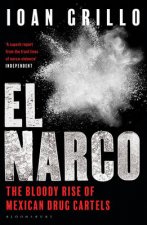
El Narco
61.28 zł -23 % -

Why Kids Kill
92.43 zł -11 % -

G-Man
148.08 zł -29 % -

Are Prisons Obsolete?
52.01 zł -23 % -

Guantanamo Diary
47.37 zł -23 % -

American Marriage
32.75 zł -26 % -

Spam Nation
75.09 zł -23 % -

Confessions Of A Yakuza
53.62 zł -4 % -

Snowing in Bali
47.37 zł -23 % -

Anatomy of Violence
70.45 zł -23 % -

Profiling The Criminal Mind
90.21 zł -5 % -

Journalist And The Murderer
47.37 zł -23 % -

Simpson's Forensic Medicine, 14th Edition
235.17 zł -

School Shooters
177.81 zł -

Black Mass
42.93 zł -23 % -
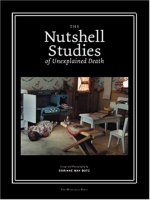
Nutshell Studies of Unexplained Death
241.52 zł -

Cybercrime and Cyber Warfare
840.02 zł -

Howard Marks' Book Of Dope Stories
84.16 zł -23 % -

Vinny Gorgeous
84.87 zł -

Corporation
61.28 zł -23 % -

Sexual Homicide: Patterns and Motives- Paperback
103.62 zł -10 % -
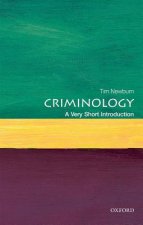
Criminology: A Very Short Introduction
42.93 zł -23 % -

Zero Zero Zero
52.01 zł -23 % -

Forensic Psychology: A Very Short Introduction
42.93 zł -23 % -

Sherlock: The Casebook
100.29 zł -15 % -

Hotel K
47.37 zł -23 % -

American Desperado
38.30 zł -23 % -

At The Devil's Table
52.01 zł -23 % -

Deadly Medicines and Organised Crime
217.33 zł
safisfied customers
Since 2008, we have served long line of book lovers, but each of them was always on the first place.
Copyright! ©2008-24 libristo.pl All rights reservedPrivacyPoučení o cookies



 21 million books
21 million books Delivery 12.99 zł
Delivery 12.99 zł (32) 444 93 66 (8-15.30h)
(32) 444 93 66 (8-15.30h)